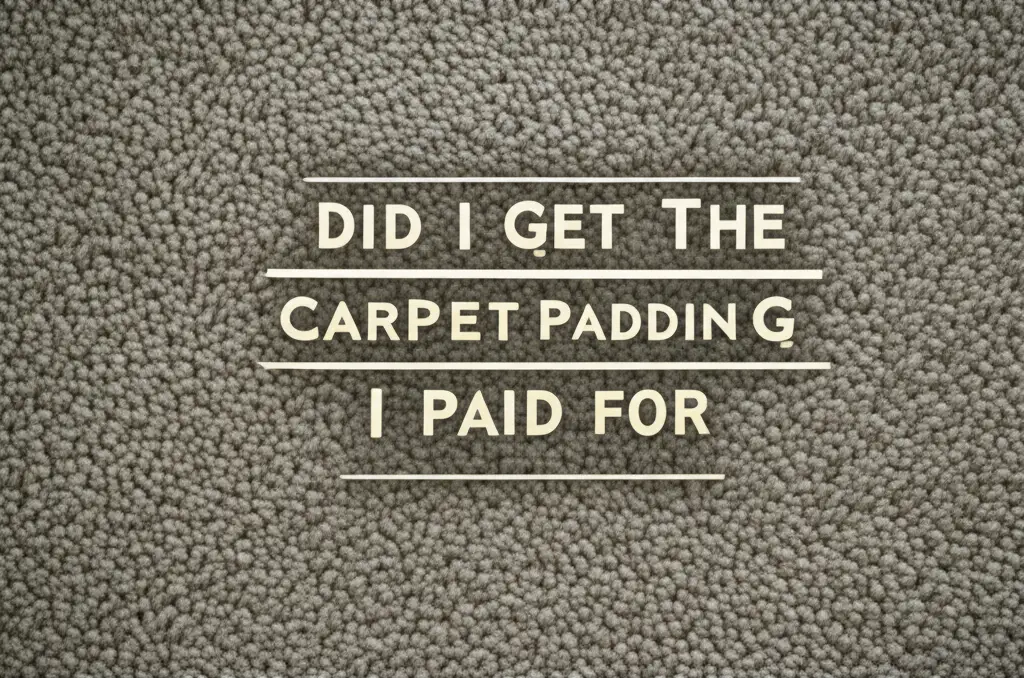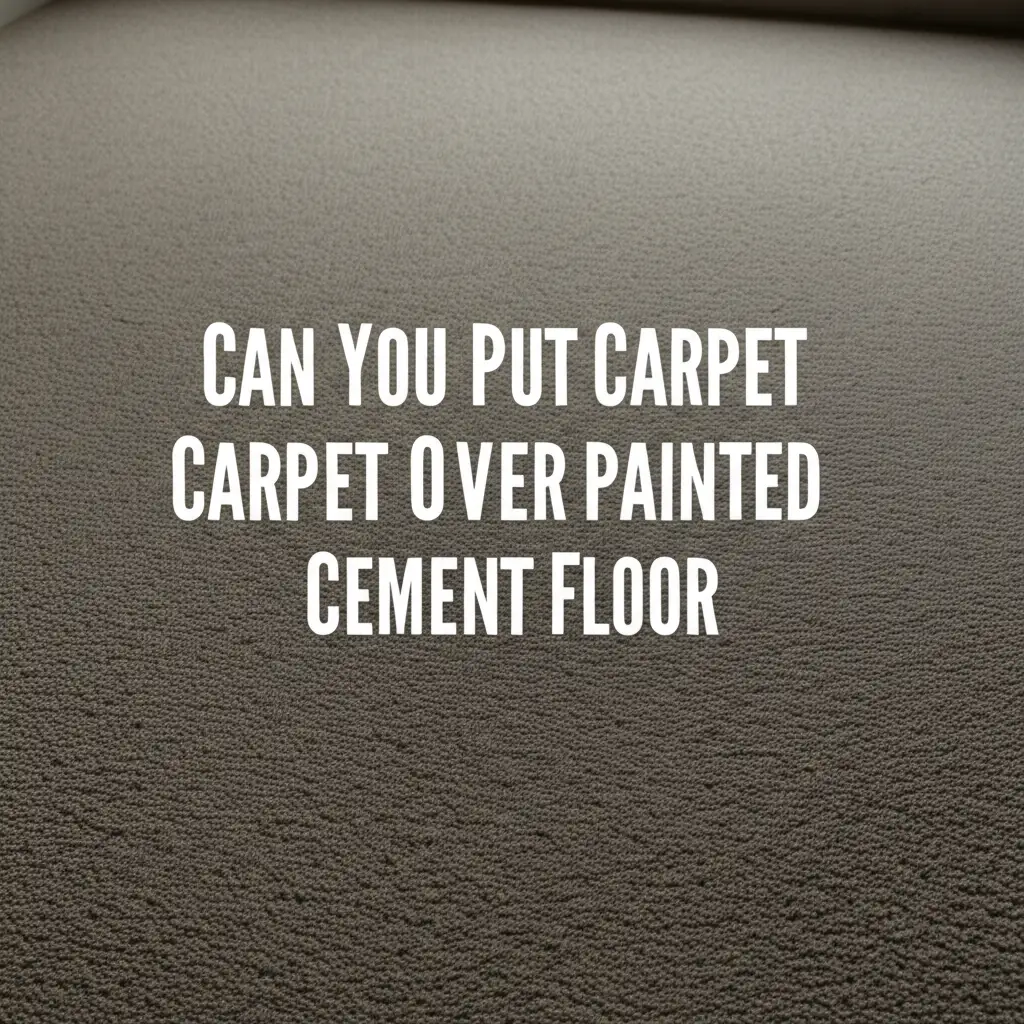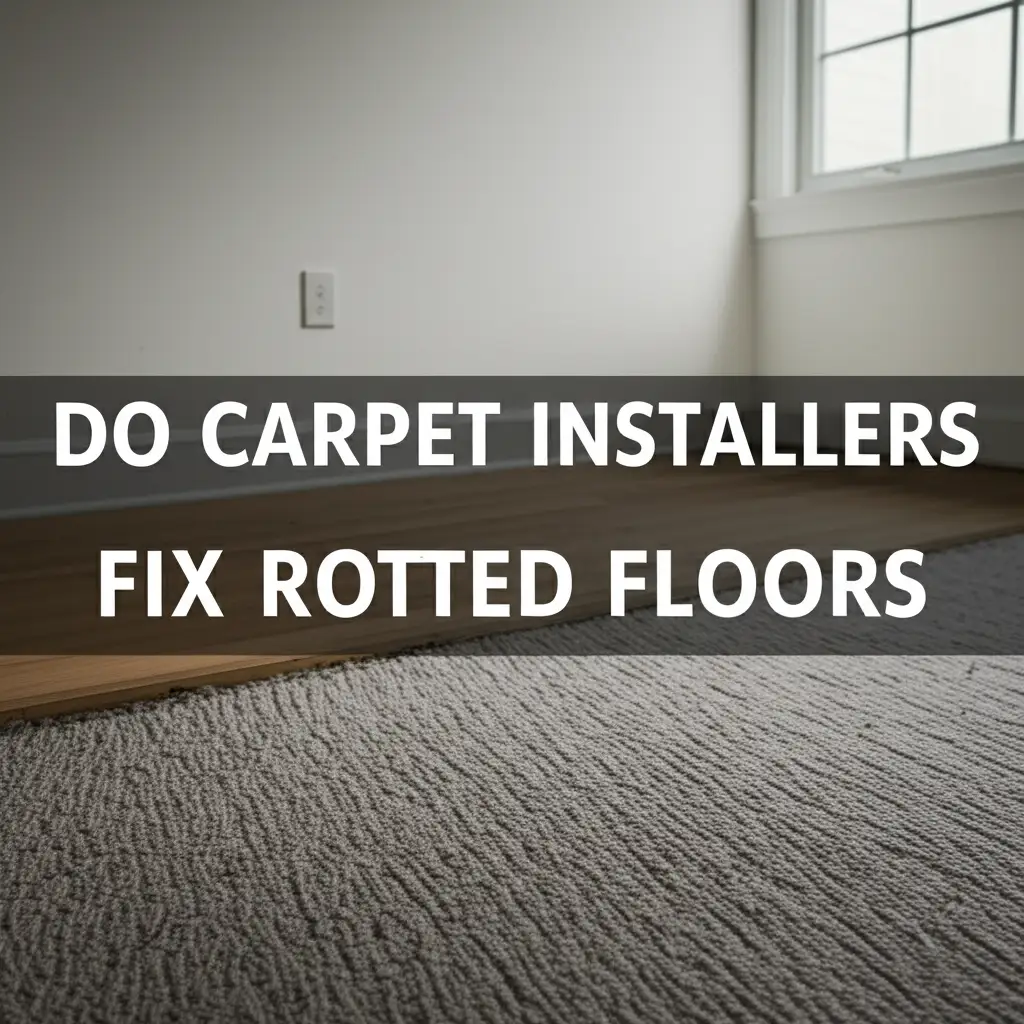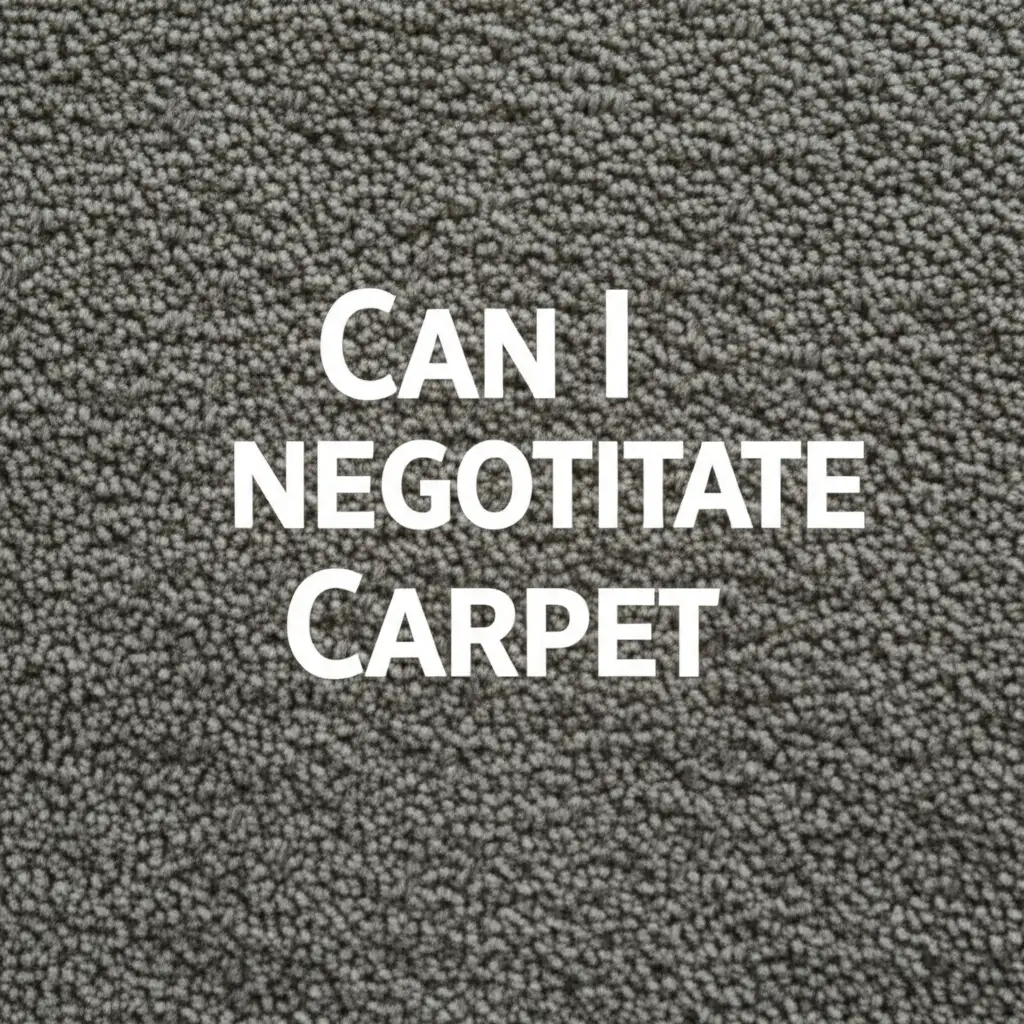· Mason Everett · Flooring · 16 min read
What Are Normal Carpet Pad Thickness Is
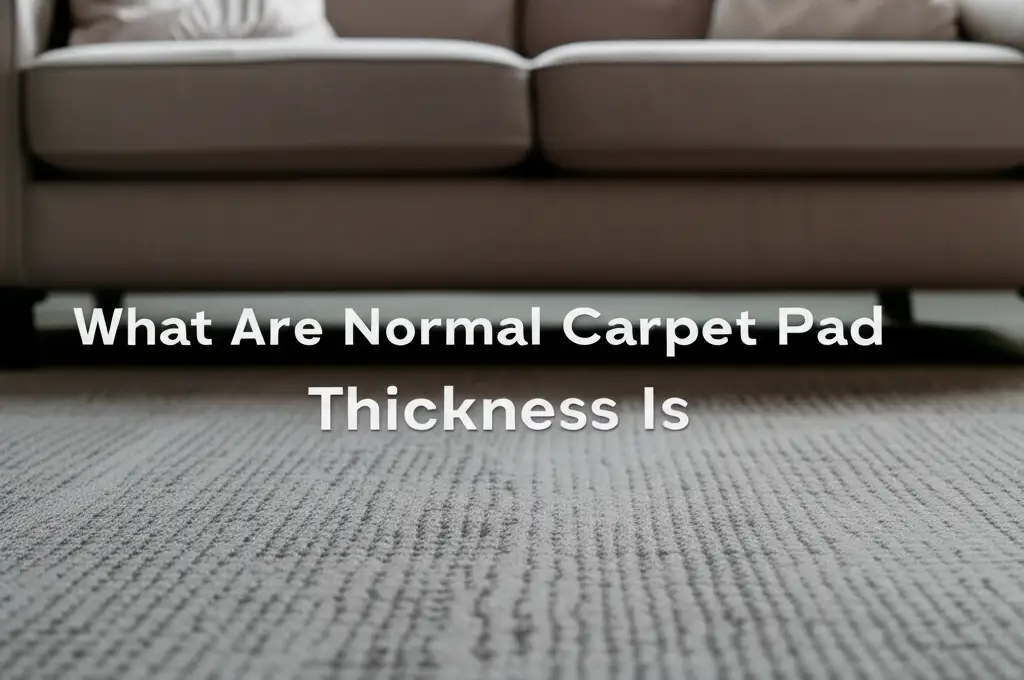
Understanding Normal Carpet Pad Thickness for Your Home
Choosing new carpet for your home is an exciting step in home improvement. However, the carpet itself is only half the story. The underlayment, often called carpet pad, plays a vital role. It affects how your carpet feels, how long it lasts, and even how well it insulates. Many people wonder, “What are normal carpet pad thickness options?” Knowing the standard thicknesses helps you make an informed choice. I want to guide you through understanding carpet pad thicknesses and densities. We will explore why these measurements matter for your comfort and carpet’s longevity. This guide will help you select the perfect foundation for your new flooring.
Takeaway:
- Standard carpet pad thickness typically ranges from 1/4 inch to 1/2 inch.
- The ideal thickness and density depend on your carpet type, traffic levels, and desired comfort.
- Thicker is not always better; an excessively thick pad can harm certain carpet types and create installation issues.
- Consider both thickness and density for optimal support, comfort, and carpet lifespan.
What are normal carpet pad thickness options?
Normal carpet pad thickness typically ranges from 1/4 inch (approximately 6mm) to 1/2 inch (approximately 12mm) for residential use. The most common choices are 3/8 inch (9mm) and 7/16 inch (11mm). The best thickness depends on your carpet type, traffic needs, and comfort preferences.
Why Carpet Pad Thickness Truly Matters
The carpet pad is more than just a layer between your carpet and the subfloor. It acts as a shock absorber for the carpet fibers. It provides cushioning, making the carpet feel softer underfoot. This hidden layer also helps extend the life of your carpet significantly. Without proper padding, carpet fibers wear out faster, especially in high-traffic areas.
A good carpet pad also offers insulation benefits. It helps retain heat in colder months, potentially lowering energy bills. It also dampens sound, making rooms quieter and more peaceful. Choosing the right pad means balancing comfort, durability, and practical benefits. I know from experience that skimping on the pad can lead to regrets later.
More Than Just Softness
A common misconception is that a thicker pad simply means more softness. While a thicker pad does add cushioning, its primary purpose goes beyond just comfort. The pad provides essential support for the carpet’s backing and fibers. This support prevents the carpet from flattening out too quickly. It also protects the carpet from abrasion against the subfloor.
Proper support is vital for the carpet’s structural integrity. It helps the carpet maintain its appearance over time. This makes the carpet look good for longer periods. It also reduces wear in heavily used areas.
Key Factors to Consider
When selecting carpet pad thickness, consider several factors. First, think about the type of carpet you are installing. Different carpet constructions require different pad specifications. Second, evaluate the amount of foot traffic the area receives. High-traffic zones need a denser, more supportive pad. Third, consider your budget, as pad quality affects the price.
Finally, think about your personal preference for comfort. A slightly thicker or denser pad can create a more luxurious feel. Balancing these factors ensures you get the best performance from your carpet. It prevents common issues like premature wear or inadequate cushioning.
Standard Carpet Pad Thicknesses Explained
When you buy carpet padding, you will find several standard thickness options. For most residential applications, 3/8 inch and 7/16 inch pads are very popular. These thicknesses offer a good balance of comfort and support for common carpet types. They provide enough cushioning without being too soft or causing issues with carpet installation.
Thinner pads, around 1/4 inch, are often used for low-profile carpets or specific installations. Thicker pads, up to 1/2 inch, are available but are not always recommended. Understanding these standard sizes helps you narrow down your choices. It ensures you select a pad appropriate for your home’s needs.
Common Residential Thicknesses
Most homes benefit from carpet pads that are 3/8 inch or 7/16 inch thick. These sizes are versatile. They work well with many common residential carpet styles, such as cut pile and Saxony. A 3/8 inch pad provides good cushioning and support for moderate traffic. It is a reliable choice for bedrooms and living rooms.
A 7/16 inch pad offers a bit more luxury and softness. It is often chosen for areas where comfort is a top priority. Both options help prolong carpet life by absorbing impact. They also improve the overall feel of the flooring.
Commercial vs. Residential Pads
Commercial settings typically use much thinner and denser carpet pads. Commercial carpet pads are usually 1/4 inch thick or less. Their primary goal is stability and durability, not softness. Commercial spaces experience heavy foot traffic, and a thick, soft pad would cause the carpet to ripple or buckle.
Residential pads focus more on comfort and sound absorption. Commercial pads focus on maintaining the carpet’s structure under constant use. This difference in purpose dictates the difference in standard thicknesses and densities. Selecting the correct pad type is crucial for the intended environment. For instance, removing commercial carpet often involves dealing with very thin, dense pads. If you are ever wondering how to take up commercial carpet, you will notice the difference in pad type.
Matching Carpet Pad Thickness to Carpet Type
Choosing the right carpet pad thickness is not a one-size-fits-all decision. The carpet type you select plays a big role. Different carpet constructions require specific levels of support to perform best. Using the wrong pad can void your carpet warranty. It can also lead to premature wear or discomfort.
For example, a thick, soft pad might be great for a plush carpet. However, it can cause problems for a tightly woven Berber. I always advise my clients to check their carpet manufacturer’s recommendations. This ensures the best performance and longevity for their new flooring. It helps avoid common installation mistakes. You can learn more about which carpet are used on carpet floor to better understand the range of carpet types available.
Plush and Saxony Carpets
Plush and Saxony carpets feature longer, softer fibers. These carpets benefit most from a slightly thicker and denser pad. A pad between 7/16 inch and 1/2 inch thick is often ideal. It should also have a good density rating. This combination provides luxurious comfort underfoot.
It also supports the long fibers, helping them spring back. This prevents them from matting down too quickly. The right pad helps these elegant carpets maintain their soft, uniform appearance. It enhances their comfort and extends their beauty.
Loop Pile and Berber Carpets
Loop pile carpets, including Berber, are known for their durability and tightly woven loops. These carpets require a firm, dense pad. A pad that is too thick or too soft can cause issues. It can lead to stretching, bubbling, or rippling of the carpet. The loops can also become crushed or damaged.
For most loop pile and Berber carpets, a pad between 1/4 inch and 3/8 inch is best. It should have a high density, typically 8 pounds or more. This firm support helps the loops maintain their shape. It prevents the carpet from moving excessively, which can lead to premature wear.
Low-Pile and Commercial Carpets
Low-pile carpets, such as commercial grade or some cut-and-loop styles, need minimal thickness. These carpets are designed for high traffic and maximum durability. A thin, very dense pad is the best choice. Often, a 1/4-inch pad with high density is used. Sometimes, no separate pad is used at all. This is common if the carpet has an integrated cushion backing.
The goal here is stability and firm support. A thick, soft pad would hinder the carpet’s performance. It would lead to instability and faster wear in busy areas. The right thin, dense pad ensures the carpet lies flat and withstands heavy use.
The Crucial Role of Pad Density
While thickness gets a lot of attention, carpet pad density is equally, if not more, important. Density refers to how much material is packed into the pad. It is measured in pounds per cubic foot (lb/ft³). A higher density means a firmer, more supportive pad. This firmness provides better protection for your carpet. It helps the carpet resist crushing and matting over time.
A pad might be thick, but if it has low density, it will not provide adequate support. It will compress easily and wear out quickly. Understanding density ratings is key to choosing a pad that truly performs. It ensures your investment in new carpet lasts for many years.
Understanding Density Ratings
Carpet pad density ratings typically range from 3 pounds to 10 pounds. A 6-pound density is a common choice for residential use. It offers a good balance of comfort and support for most moderate-traffic areas. For heavier traffic or greater durability, an 8-pound density pad is excellent. This density offers superior resilience.
Pads with lower density (3-5 pounds) are softer but break down faster. They are usually less expensive. I recommend investing in a higher density pad whenever your budget allows. It pays off in the long-term performance of your carpet.
Density for High-Traffic Areas
For areas that see a lot of foot traffic, density is paramount. Hallways, stairs, living rooms, and family rooms need a pad with high density. An 8-pound density pad is ideal for these zones. It provides the firm support needed to prevent rapid carpet wear. It also helps the carpet maintain its appearance under constant stress.
A high-density pad also reduces carpet movement. This prevents wrinkles and ripples from forming over time. It makes the carpet safer to walk on. It also helps keep a carpet down and looking neat. High density is an investment in your carpet’s longevity and performance.
Benefits of Choosing the Right Underlayment
Selecting the correct carpet pad offers numerous benefits beyond just comfort. It is an integral part of your flooring system. The right underlayment protects your carpet, improves its feel, and enhances your home’s environment. It contributes to the overall value and enjoyment of your living space.
Ignoring the importance of the pad is a common mistake that I see. People focus too much on the carpet itself. However, the pad plays a critical role in the carpet’s long-term success. Investing in a good quality, appropriate pad will pay dividends over the years.
Extending Carpet Life
The primary benefit of a proper carpet pad is extending your carpet’s life. The pad absorbs the impact of foot traffic. This prevents the carpet fibers from being crushed or breaking down prematurely. It also acts as a barrier between the carpet backing and the rough subfloor. This prevents abrasion.
A good pad helps the carpet maintain its pile height and appearance. It delays the need for carpet replacement. This saves you money in the long run. It is truly an investment in the durability of your flooring.
Enhanced Comfort and Feel
A high-quality carpet pad makes your carpet feel much more luxurious. It provides cushioning that makes walking and standing more comfortable. This added softness is especially noticeable in areas where you spend a lot of time. Bedrooms, living rooms, and play areas become more inviting.
The pad also helps the carpet feel warmer underfoot. This is especially true in colder climates or on cold subfloors. It creates a cozy and welcoming atmosphere in your home. The right pad significantly upgrades your carpet’s comfort level.
Sound and Thermal Insulation
Carpet pads are excellent insulators. They help reduce noise transfer between floors. This is particularly beneficial in multi-story homes. It creates a quieter living environment. The pad absorbs sounds from footsteps and reduces echoes.
Beyond sound, pads also offer thermal insulation. They create an extra barrier against temperature loss through the floor. This can help keep your home warmer in winter and cooler in summer. It may contribute to lower heating and cooling costs over time. This makes your home more energy efficient.
When Thicker Isn’t Always Better: Avoiding Common Mistakes
It is tempting to think that the thickest, softest carpet pad is always the best choice. However, this is a common misconception. In many cases, an overly thick or too soft pad can actually cause more problems than it solves. It can negatively impact your carpet’s performance and lifespan. It can also create installation challenges.
Understanding why limitations exist is crucial for a successful carpet installation. I’ve seen firsthand how an incorrect pad choice can lead to issues. It can cause ripples, reduce durability, or even create tripping hazards. It’s important to balance comfort with practical needs.
Potential Issues with Excessive Thickness
An excessively thick carpet pad can create several problems. First, it can put too much stress on the carpet’s backing. This causes the backing to stretch or break down prematurely. This can lead to unsightly ripples or buckling in the carpet. It makes the carpet look old before its time.
Second, an overly soft pad provides insufficient support. This can cause the carpet fibers to wear out faster, despite the cushioning. The carpet pile may flatten quickly in traffic areas. This defeats the purpose of extending carpet life.
Impact on Door Clearance and Transitions
A too-thick carpet pad can also lead to practical issues in your home. One common problem is reduced door clearance. Doors may drag or stick against the new carpet and pad. This can require trimming the bottom of the doors, an extra and sometimes complex task.
Transitions between rooms can also become problematic. A thick pad creates a higher carpet height. This makes it difficult to install smooth transitions to other flooring types. It can create tripping hazards. These are important considerations for a functional and safe home.
DIY Tips for Carpet Pad Installation
Installing carpet pad can be a rewarding DIY project if you approach it correctly. While professional installation is always an option, doing it yourself can save money. Preparing your subfloor and understanding basic cutting and seaming techniques are essential. Proper installation ensures your carpet performs its best.
Take your time and follow manufacturers’ guidelines for both the carpet and the pad. This will help you achieve a professional-looking result. I always encourage homeowners to try if they feel comfortable with the tools and process. If you ever wondered how to cut carpet pad with rubber backing, specific tools and techniques are needed.
Measuring and Laying the Pad
Before cutting, accurately measure your room. Add a few inches to each dimension for trimming. Lay the pad in sections, typically starting from one wall. Make sure the pad pieces lie flat and smoothly. Avoid wrinkles or overlaps, as these will show through the carpet.
Use a utility knife with a sharp blade for cutting the pad. You can score the top side and then bend it to cut through. Cut around obstacles like vents or floor registers carefully. This ensures a snug fit.
Seaming and Trimming
When joining pieces of carpet pad, butt the edges together tightly. Avoid overlapping the pad pieces. Use specialized carpet pad tape to secure the seams. This tape prevents the pad from shifting or separating over time. Apply the tape firmly along the entire seam.
Trim the pad precisely at the edges of the room. Leave about a 1/4 inch gap from the tack strips around the perimeter. This gap allows the carpet to be stretched properly onto the tack strips. Proper trimming helps keep a carpet down without issues. It also makes for a neater, more secure installation.
Securing the Pad
Once the pad is laid and seamed, secure it to the subfloor. For wood subfloors, staples are typically used. Place staples every 6-8 inches around the perimeter and along seams. For concrete subfloors, special adhesive is usually applied. Follow the adhesive manufacturer’s instructions for application.
Properly securing the pad prevents it from shifting. It also ensures a stable foundation for the carpet. This step is critical for a long-lasting and wrinkle-free carpet installation. Take your time to do this correctly for the best results.
Frequently Asked Questions About Carpet Pad Thickness
Q1: Can I use a 1/2 inch pad for any carpet type?
No, a 1/2 inch pad is generally too thick for many carpet types, especially loop pile or Berber carpets. It can cause stretching, wrinkling, or premature wear due to excessive softness. It is best suited for thick, plush carpets where maximum comfort is desired. Always check your carpet manufacturer’s specific recommendations for pad thickness.
Q2: What is the ideal density for a carpet pad?
The ideal density for a carpet pad typically ranges from 6 to 8 pounds. For most residential use, a 6-pound density offers a good balance of comfort and durability. For high-traffic areas or maximum longevity, an 8-pound density pad is highly recommended. Density is crucial for supporting the carpet fibers and extending carpet life.
Q3: Does carpet pad thickness affect my carpet warranty?
Yes, using the wrong carpet pad thickness or density can absolutely void your carpet warranty. Carpet manufacturers often specify exact pad requirements to ensure their product performs as designed. Always read your carpet’s warranty information carefully before purchasing a pad. Following these guidelines protects your investment.
Q4: How do I know if my old carpet pad needs replacement?
You know your old carpet pad needs replacement if it feels flat, crunchy, or if you can feel the subfloor through the carpet. Discoloration, crumbling, or a visible lack of cushioning are also signs. A worn-out pad offers no support, making your carpet wear out faster. Always replace the pad when installing new carpet.
Q5: Is thicker carpet pad always more expensive?
Generally, thicker carpet pads can be more expensive, especially if they also have a higher density. However, cost is not solely determined by thickness. The type of material (e.g., urethane foam, rubber), density, and brand also impact the price. Focus on finding the right balance of thickness and density for your needs, rather than just the thickest option.
Conclusion: Making the Smart Choice for Your Carpet Pad Thickness
Choosing the right carpet pad thickness is a critical step in your flooring project. It goes beyond just adding softness to your step. The proper underlayment supports your carpet, extends its life, and improves your home’s comfort and sound insulation. We have explored normal carpet pad thickness options, discussed the importance of density, and reviewed how to match the pad to your specific carpet type. Remember, a thicker pad is not always the best solution. Balance thickness with density and consider the specific needs of your carpet and living space.
By making an informed decision about your carpet pad, you ensure your new carpet looks great and lasts for many years to come. Invest wisely in your pad. It is the unseen hero beneath your beautiful new carpet. Your feet, and your wallet, will thank you for it in the long run.


